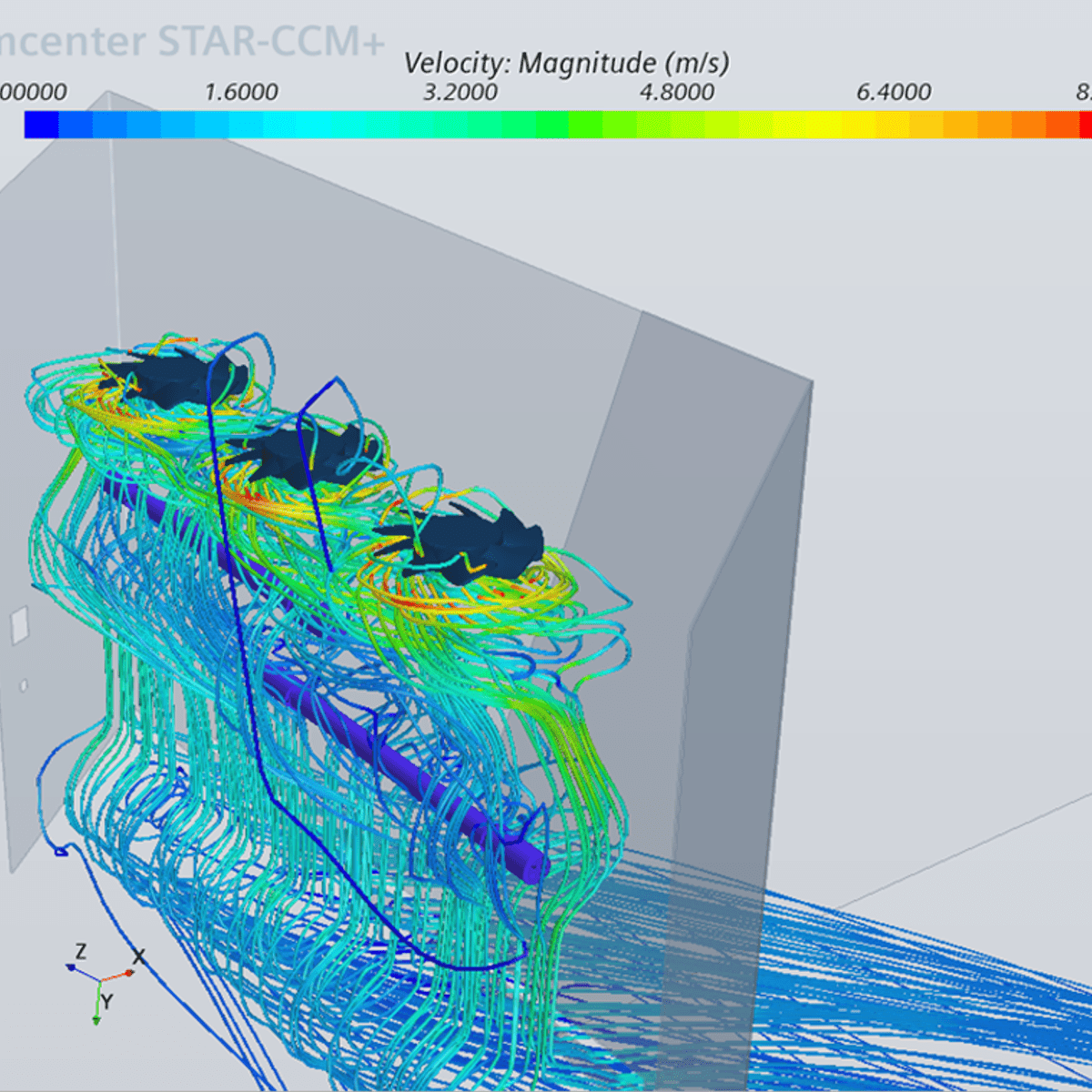
이 글을 읽고 계신다면 Simcenter STAR-CCM+ 소프트웨어 또는 다른 CFD 도구를 사용하는 응용 CFD(전산 유체 역학)를 살펴보는 데 관심이 있으시기 때문일 것입니다. 이 강좌는 업무 능력을 개선하고 커리어 또는 교육 경력을 발전시키는 첫걸음이 되어 줄 것입니다.
이 강좌는 흐름 물리학 및 전산 유체 역학 지식을 기반으로 흐름 및 열 전달 문제에 대한 최상의 해법을 가장 효율적으로 얻을 수 있도록 지원하기 위해 마련되었습니다. 이 강좌에서는 특정 소프트웨어를 사용하는 방법에 대한 지침을 다루지 않습니다. 이 강좌에서 보여주는 모든 시뮬레이션에는 Simcenter STAR-CCM+가 독점적으로 사용되었습니다. 그러나 기능이 동일하기만 하면 다른 공용 또는 상용 소프트웨어를 사용하더라도 동일한 학습 결과를 얻을 수 있습니다.
What's inside
Syllabus
응용 전산 유체 역학
1주 차에는 기본 흐름 모델(Euler, Navier-Stokes 및 RANS(Reynolds-averaged Navier-Stokes) 방정식) 소개에서 다루는, 하단 벽에 반원형 장애물이 있는 채널의 흐름, 엔지니어링 응용 사례에서 볼 수 있는 대부분의 흐름(경계층, 전단층, 흐름 분리, 재순환 영역)의 기본 특징, 그리고 이러한 현상을 포함하는 흐름을 시뮬레이션하는 접근 방식을 살펴봅니다. 비점성 층류 및 난류 흐름 간을 구분하는 방법뿐만 아니라 흐름 특징을 시각화하고 분석할 수 있는 방법과 흐름 체계에 대한 지식이 컴퓨팅 그리드의 설계와 선택한 물리 모델 및 시뮬레이션 매개변수에 어떻게 영향을 미치는지 설명합니다. 마지막으로 시뮬레이션의 효율성을 높이는 방법과 이산화 오차를 추정하는 방법을 알아봅니다.
Read more
Syllabus
Good to know
Save this course
Activities
코스 자료 정리 및 검토하기
Show steps
코스 자료를 정리하고 검토하면 강의 내용을 통합하고, 학습을 효율화하고, 시험에 대비할 수 있습니다.
Show steps
-
강의 노트, 과제, 퀴즈를 검토하기
-
관련 교재 또는 참고 자료 탐색하기
-
요약, 마인드맵, 플래시카드 만들기
Show all one activities
코스 자료 정리 및 검토하기
Show steps
코스 자료를 정리하고 검토하면 강의 내용을 통합하고, 학습을 효율화하고, 시험에 대비할 수 있습니다.
Show steps
- 강의 노트, 과제, 퀴즈를 검토하기
- 관련 교재 또는 참고 자료 탐색하기
- 요약, 마인드맵, 플래시카드 만들기
Career center
Computational Fluid Dynamics Engineer
CFD Analyst
Aerospace Engineer
Mechanical Engineer
Automotive Engineer
Energy Engineer
Chemical Engineer
Biomedical Engineer
Civil Engineer
Environmental Engineer
Materials Scientist
Nuclear Engineer
Petroleum Engineer
Robotics Engineer
Data Scientist
Reading list
Share
Similar courses
OpenCourser helps millions of learners each year. People visit us to learn workspace skills, ace their exams, and nurture their curiosity.
Our extensive catalog contains over 50,000 courses and twice as many books. Browse by search, by topic, or even by career interests. We'll match you to the right resources quickly.
Find this site helpful? Tell a friend about us.
We're supported by our community of learners. When you purchase or subscribe to courses and programs or purchase books, we may earn a commission from our partners.
Your purchases help us maintain our catalog and keep our servers humming without ads.
Thank you for supporting OpenCourser.



